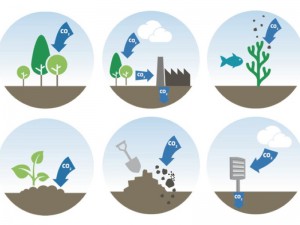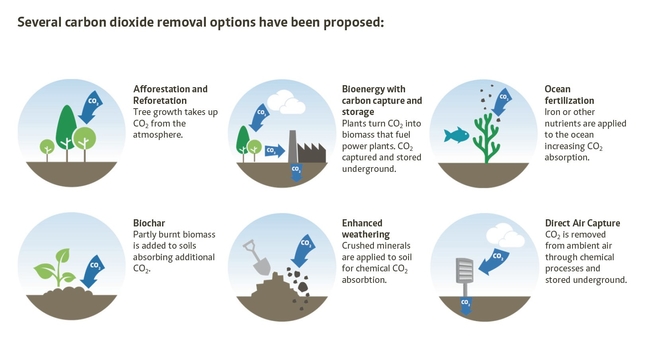
The recent UN Climate Action Summit in New York highlighted the goal of greenhouse gas neutrality and thus emphasised the issue of atmospheric carbon removal. This is because currently debated time trajectories are only realistic if humanity captures some of the excessively emitted gases. Currently, there are numerous scenarios as to how this could work for the most important greenhouse gas: carbon dioxide (CO2). A new study by the Berlin climate research institute MCC (Mercator Research Institute on Global Commons and Climate Change) has systematically evaluated this part of the research literature for the first time and condensed it into 36 core statements. It has now been published in the renowned journal Climatic Change.
The study shows how important carbon removal technologies are for achieving greenhouse gas neutrality. In order to limit global warming to 1.5 degrees compared to the pre-industrial level, these technologies are indispensable. With the 2-degree target, ambitious climate protection can still greatly limit dependence on these technologies.
“All in all, it is clear that in the future CO2 will have to be extracted from the atmosphere using various methods simultaneously,” summarises Jan Minx, head of the MCC working group Applied Sustainability Science. “Using a range of different technologies is the only way to ensure reliable carbon removal with acceptable risks.” Besides afforestation and reforestation, other methods include the removal of CO2 from ambient air (Direct Air Capture), the spreading of special minerals on arable land (Terrestrial Enhanced Weathering), and cultivation of biomass as an energy source with separation and storage of the CO2 released during combustion (Bioenergy with Carbon Capture and Storage).
The climate scenarios evaluated by the MCC also differ significantly due to varying assumptions about the general future trend. I.e., the need for carbon removal also depends on population, economic output, urbanisation and education. “Our findings really show that we will only be able to get the climate problem under control through a broader sustainability policy,” emphasises Minx. The Intergovernmental Panel on Climate Change (IPCC) will most likely also address atmospheric carbon removal in the Sixth Assessment Report expected in mid-2021, and fuel the debate on necessary investments. Minx is involved as a Coordinating Lead Author in the preparation of the report. “We must engage in atmospheric carbon removal, but it is also associated with certain risks. Therefore, humanity as a whole should become dependent on it as little as possible. And that can only be achieved through ambitious climate policy.”

Reference
Hilaire, J., Minx, J., Callaghan, M., Edmonds, J., Luderer, G., Nemet, G., Rogelj, J., del Mar Zamora, M., 2019, Climatic Change
https://doi.org/10.1007/s10584-019-02516-4
Source
Mercator Research Institute, press release, 2019-10-21.
Supplier
Intergovernmental Panel on Climate Change (IPCC)
Mercator Research Institute on Global Commons and Climate Change (MCC)
Share
Renewable Carbon News – Daily Newsletter
Subscribe to our daily email newsletter – the world's leading newsletter on renewable materials and chemicals












